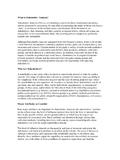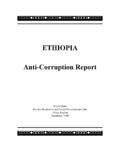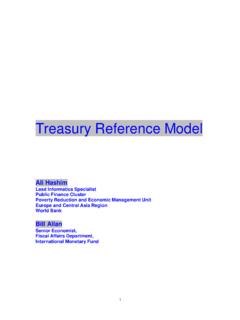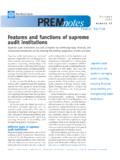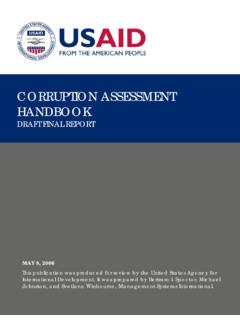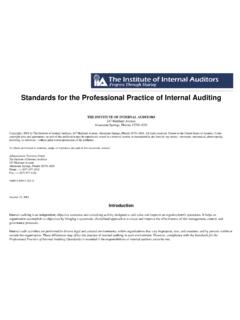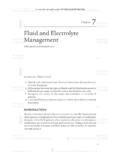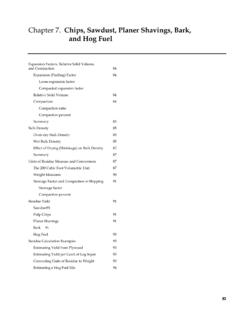Transcription of Financial Liberalization: What Went Right,What …
1 THE Financial liberalization that took place in the developingcountries in the 1980s and 1990swas part of the general move toward giving marketsa greater role in development. It was also a reactionto several factors specific to finance: the costs, cor-ruption, and inefficiencies associated with usingfinance as an instrument of populist, state-led devel-opment; a desire for more Financial resources; citi-zens demands for better finance and lower implicittaxes and subsidies; and the pressures exerted onrepressed Financial systems by greater internationaltrade, travel, migration, and better Financial reforms went beyond the interestrate liberalization that had been recommended bythe so-called Washington Consensus.
2 To varyingdegrees, governments also allowed the use of foreigncurrency instruments and opened up capitalaccounts. Domestic markets developed in centralbank and government debt, and international mar-kets expanded in government and private markets developed, but less rapidly, and weremost successful in the larger, already rapidly growing,East and South Asian countries. State banks contin-ued to have a major role for much of the 1990s; theirprivatization was gradual and often proved banks moved away from trying to financedevelopment; they became more independent andsuccessfully focused on keeping inflation low, buttheir debt increasingly absorbed bank the reforms produced some gains.
3 Butthe growth benefits of the Financial and nonfinan-cial reforms in the 1990s were less than crises raised questions of whether finan-cial liberalization was the wrong model, what hadgone wrong, and the appropriate direction of futurefinancial sector policy. Overall, the 1990s is proba-bly best considered a precursor of better things thatwill take some time to 1 of this chapter describes why and howfinancial liberalization occurred. Section 2 discussesthe outcomes of Financial liberalization during the1990s, including the crises that occurred and theirrelation to macroeconomic policies, Financial liber-alization, and the overhangs of old economic andpolitical systems. Section 3 summarizes the lessonsfrom the experience of the 1990s, and section 4draws suggestions for future policy.
4 Section 5 con-cludes the From Financial Repression toFinancial LiberalizationThe Financial repression that prevailed in develop-ing and transition countries in the 1970s and 1980sreflected a mix of state-led development, national-ism, populism, politics, and corruption. The finan-cial system was treated as an instrument of thetreasury: governments allocated credit at below-market interest rates, used monetary policy instru-ments and state-guaranteed external borrowing toensure supplies of credit for themselves and publicsector firms, and directed part of the resources thatFinancial Liberalization: what went Right,What went Wrong?207 Chapter 7low returns, crowded out more efficient potentialusers, and encouraged wasteful use of repression also worsened income distri-bution.
5 Subsidies on directed credits were often large,particularly in periods of high inflation, and actualallocations often went to large lowinterest rates led to corruption and to the diversion ofcredits to powerful parties. Diversions tended to growover time, particularly when inflation reduced realinterest rates on credits, and rising fiscal deficits anddirected credits absorbed more of the limited CostsThe repressed systems were costly. Banks, particularlystate banks and development banks, periodicallyECONOMIC GROWTH IN THE 1990s208were left to sectors they favored. State banks wereconsidered necessary to carry out the directedcredit allocations,1as well as to reduce dependenceon foreigners.
6 Bank supervisors focused on com-plying with the often intricate requirements ofdirected credit rather than with prudential regula-tions. Interest rates to depositors were kept low tokeep the costs of loans low. In some cases, lowdeposit and loan rates were also populist measuresintended to improve income finance was thus an implicit tax andsubsidy system through which governments trans-ferred resources from depositors receiving lowinterest rates (and from those borrowers not receiv-ing directed credits) to borrowers paying low ratesin the public sector and to favored parts of the pri-vate sector. Governments had to allocate creditbecause they set interest rates that generated excessdemand for credits.
7 Capital controls were needednot (as often argued) to protect national saving, butto limit capital outflows fleeing low interest ratesand macroeconomic instability, and to increase thereturns from the inflation effect, capitalcontrols were a tax on those unwilling or unable toavoid them and they encouraged corruption (Han-son 1994).Factors behind Financial LiberalizationThree general factors provided an impetus for themove to Financial liberalization : poor results, highcosts, and pressures from sectiondiscusses each in ResultsTogether, the limited mobilization and inefficientallocation of Financial resources slowed economicgrowth (McKinnon 1973; Shaw 1973). Low inter-est rates discouraged the mobilization of finance,and bank deposit growth slowed in the 1980s in themajor countries (figure ).
8 Capital flight occurreddespite capital controls (Dooley et al. 1986).Alloca-tion of scarce domestic credits and external loans togovernment deficits, public sector white ele-phants, and unproductive private activities yielded30%25%20%15%10%5%0% 5%1960s1970s1980s1990sPercentage of GDP IncreaseSouth Asia (3 countries)Latin America (7)Africa (10)East Asia (4)FIGURE in Average Deposits/GDP in MajorCountries, by Regions, 1960s -90s(difference between 3-year average of bank deposits/GDP atthe end of each decade)Source: IMF,International Financial : Countries and regions covered are: East Asia: Indonesia, Republic of Korea, Malaysia, the Philippines,Thailand. Latin America: Argentina, Brazil, Chile, Colombia, Mexico, Peru,Rep blica Bolivariana de Venezuela.
9 Africa: Ghana, Kenya, Nigeria, Tanzania, Uganda, Burkina Faso,Cameroon, C te d Ivoire, Mali, Senegal. South Asia: Bangladesh, India, recapitalization and the takeover of theirexternal debts by governments. Political pressuresand corruption were widespread. Loan repaymentswere weak because loans financed inefficient activi-ties, because loan collection efforts were insufficient,and because borrowers tended to treat loans fromthe state banks simply as transfers. Typically, banksand other intermediaries rolled over their nonper-forming loans until a period of inflation wiped outdepositors claims and permitted a general intermediaries were not forced to follow rea-sonable prudential norms or mark their portfolios tomarket, the losses were nontransparent, even to thegovernments that often owned them.
10 Inflation alsohelped to conceal the problems of commercial banksthrough their earnings on low interest costs of the repressed systems became moreapparent once Financial liberalization from GlobalizationPerhaps most important, Financial repression cameunder increasing pressure from the growth of trade,travel, and migration as well as the improvement increased access to interna-tional Financial markets broke down the controls oncapital outflows on which the supply of low-costdeposits had controls may beeffective temporarily, but over time mechanisms(such as overinvoicing imports and underinvoicingexports) develop to subvert them (Arioshi et ; Dooley 1996). These mechanisms becamemore accessible as goods and people became moreinternationally Evolution of Financial liberalization The shift in policies differed in timing, content, andspeed from country to country and included manyreversals.
